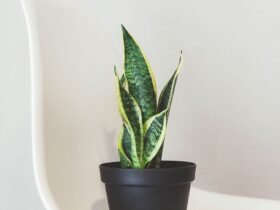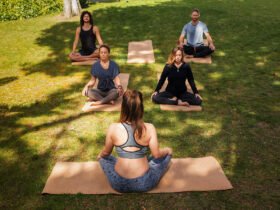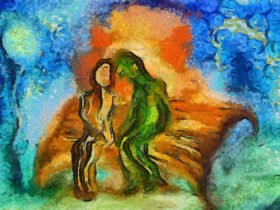 I’ve been to more than 30 countries and have spent about a year and a half immersed in other cultures. My biggest motivation to travel is learning about the way people live in different cultures. I have always been fascinated by human behavior, cultures, and the way people live, work, practice rituals, and take care of themselves in the various parts of the world. Different cultures approach wellness in different ways, and there is a lot to learn from each and every tradition and ritual practiced from East to West and North to South.
I’ve been to more than 30 countries and have spent about a year and a half immersed in other cultures. My biggest motivation to travel is learning about the way people live in different cultures. I have always been fascinated by human behavior, cultures, and the way people live, work, practice rituals, and take care of themselves in the various parts of the world. Different cultures approach wellness in different ways, and there is a lot to learn from each and every tradition and ritual practiced from East to West and North to South.
Every culture has different traditions and rituals for mindfulness, prayer, self-improvement, happiness, and wellness. Here is a snapshot of some of my most unique and favorite travel memories:
- Baños de Cajon, Ecuador, which is essentially a steam bath in a box. I can’t even describe it – if you ever make it to Baños in Ecuador, you must give it a try.
- Holy water ceremonies in Bali
- Thermal bath houses, Budapest, Hungary
- Thai massage, Thailand
- Floating in the Dead Sea, Israel
- Mud bathing, Hawaii
- Salsa dancing, Cuba
- Cacao ceremonies, Costa Rica
In the name of stress management, self-love, and curiosity, take a time out and try something new to help you be more present and find more joy in your life. Each country has unique ways of managing stress and finding balance in the mind and body, and I’ve outlined some below to get you started.
From the ancient Egyptian ritual of cupping therapy to Japan’s practice on Shinrin Yoku, try one of the following 12 practices, inspired by diverse cultures, but easy to incorporate into your own life, wherever you live.
1. India: Laughter Yoga
The practice of laughter yoga originates from Dr. Madan Kataria’s 1995 article titled Laughter — the Best Medicine, which discussed the health benefits of laughing. He created a practice that combined breathing exercises with forced laughter. Laughter reduces stress, boosts the immune system, helps fight depression and anxiety, and increases happiness.
How to practice: Find ways to laugh in your daily life! Here are some ideas:
- Try a laughter yoga class
- Try improv comedy
- Watch a funny show or movie
- Go to a comedy show
- Spend time with your hilarious friends
2. Japan: Shinrin Yoku
The Japanese practice Shinrin Yoku means “forest bathing.” It’s a preventative health care method based on the belief that there are plenty of health benefits from living in the forest. The time spent in nature is said to encourage clearer intuition, increased flow of energy, deepening of friendships, and overall higher levels of happiness.
How to practice: Get outdoors! It’s as simple as that. If you need more ideas, try these:
- Go hiking
- Take a walk
- Plan a picnic in the woods
- Go camping
- Start a garden
3. Egypt: Cupping Therapy
A medical practice first used by the Egyptians, cupping therapy is the practice of pulling toxins from the body. The cups used many years ago were made of animal horns, and today glass cups are used. It is also used in Chinese medicine to aid in healing. The cup is placed on the patient in the area that needs healing and heat is applied. The cup works as a vacuum as blood is drawn to the skin. It is used to treat blood disorders, migraines, skin problems, and pain, among other things.
How to practice: Find a facility that practices cupping therapy near you. You might start by looking up acupuncturists, as cupping is often a part of a Chinese medicine practice.
4. China: Acupuncture
The traditional Chinese treatment of acupuncture involves inserting needles into the body to balance energy. Doctors of Chinese Medicine use needles in specific points along the meridians to balance the flow of energy, or Chi (QI) that flows through the body. Many people find that acupuncture can help treat headaches, back pain, neck pain, allergies, insomnia, infertility, high blood pressure, and much more.
How to practice: Find a licensed acupuncturist near you.
5. Russia: Banya or Sauna
A banya is a small wooden room that is heated with firewood, also known as a Russian sauna or steam bath. Banyas began as a place to be social – for people to gather and converse. Today, there is still a specific ritual that you’ll find if you visit a banya in Russia. You don’t heat up just once; you leave the room and return many times. The banya is a place that brings people together, and is also said to help cleanse the skin, detox the body, and boost the immune system.
How to practice: Plan a sauna day with your friends. Find a sauna near you (it doesn’t have to be a banya) and be intentional about going in with an open mind.
6. Norway: Friluftsliv
In Norwegian, Friluftsliv translates to “open-air living.” The word refers to our relationship with nature. It suggests that exploration and appreciation of nature will lead to greater happiness.
How to practice: Similar to Shinrin Yoku, find ways to get outdoors! Plan a camping trip with friends so you can spend an entire weekend in nature. Make sure to be respectful of your surroundings and leave no trace.
7. Japan: Inemuri or Power Naps
In Japan, people have embraced the practice of closing their eyes to rest for just a moment – anywhere at any time – from subway stations to coffee shops. Inemuri is not a full state of sleep, but rather an in-between stage like daydreaming. It is seen as respectful in Japan because it means the person has worked very hard, and strong work ethic is part of the Japanese culture.
How to practice: When you feel tired throughout the week, try taking a moment and closing your eyes. Allow yourself moments of peace throughout the day. If you fall asleep easily, you might want to set an alarm – just in case.
8. Iceland: Hot Springs
Iceland is known as “the land of fire and ice” because of its unique mix of glaciers and volcanic activity. The geothermal energy heats up areas of water, creating natural hot springs. These hot springs are said to offer anti-aging properties, decrease pain, improve acne, and increase endorphins and blood circulation.
How to practice: Find a natural hot spring in your area. If you aren’t in close proximity to a natural hot spring, try a hot bath with natural bath salts. Taking time to give your skin some love can help you relax and unwind.
9. South America: Mate Tea
Originating in Argentina, Uruguay, and Brazil, yerba mate is an herbal tea that’s made from the leaves of the llex paraguariensis plant. It is commonly used as a replacement for coffee since it does have caffeine. Yerba mate is rich in antioxidants, boosts energy, can enhance physical performance, and can boost your immune system.
How to practice: Try swapping your morning coffee for some mate tea and see if you notice an increase in energy throughout your day. It may give you the caffeine buzz without the jitters.
10.Tibet: Tibetan Singing Bowls
Tibetan singing bowls are used in sound healing. They create a vibration that is said to heal on many levels. The sonic waves resonate with your brainwaves and synchronize, to create a feeling of peace.
How to practice: Some yoga studios offer sound healing sessions; do some research to find out if any are near you. Spotify also has many relaxing options to listen to Tibetan singing bowls online, check it out.
11. Sweden: Fika
Fika is often translated as a “coffee and cake break,” but Swedish coffee breaks are more about the state of mind than the coffee and the cake. For Swedes, Fika is a moment to slow down and share a coffee and bite to eat with loved ones. You can’t Fika by yourself – it’s a ritual you do with friends to connect and socialize.
How to practice: Bake some cookies, put on a pot of coffee or tea, and invite a friend over to help you enjoy them. Or pick up a friend on your way to check out a new coffee shop or bakery.
12. Nigeria: Ubuntu
Ubuntu is a way of life or a philosophy of life. The word ubuntu literally translates to “so much,” or “I am because we are. This is a gesture of appreciation for others, and a concept that we are all part of the same family. This sense of community manifests itself as kindness, caring, and compassion toward others. At its core, ubuntu highlights the traits of sharing, fairness, hospitality, caring, and honesty in the community.
How to practice: Practice generosity and kindness. Make it your goal to focus on interacting with others with care, supporting those in your life who need you, and allowing yourself to be supported by friends and family. For more ideas, check out these 44 acts of kindness.
Managing your stress doesn’t have to be only about practicing yoga and meditation (although those are great strategies, too!) There many ways to find balance and joy in your life, and looking to other cultures for inspiration is a fun way to explore the world of wellness.


Infographic Credit: https://www.berries.com/blog/happiness-and-wellness-practices
















Leave a Reply